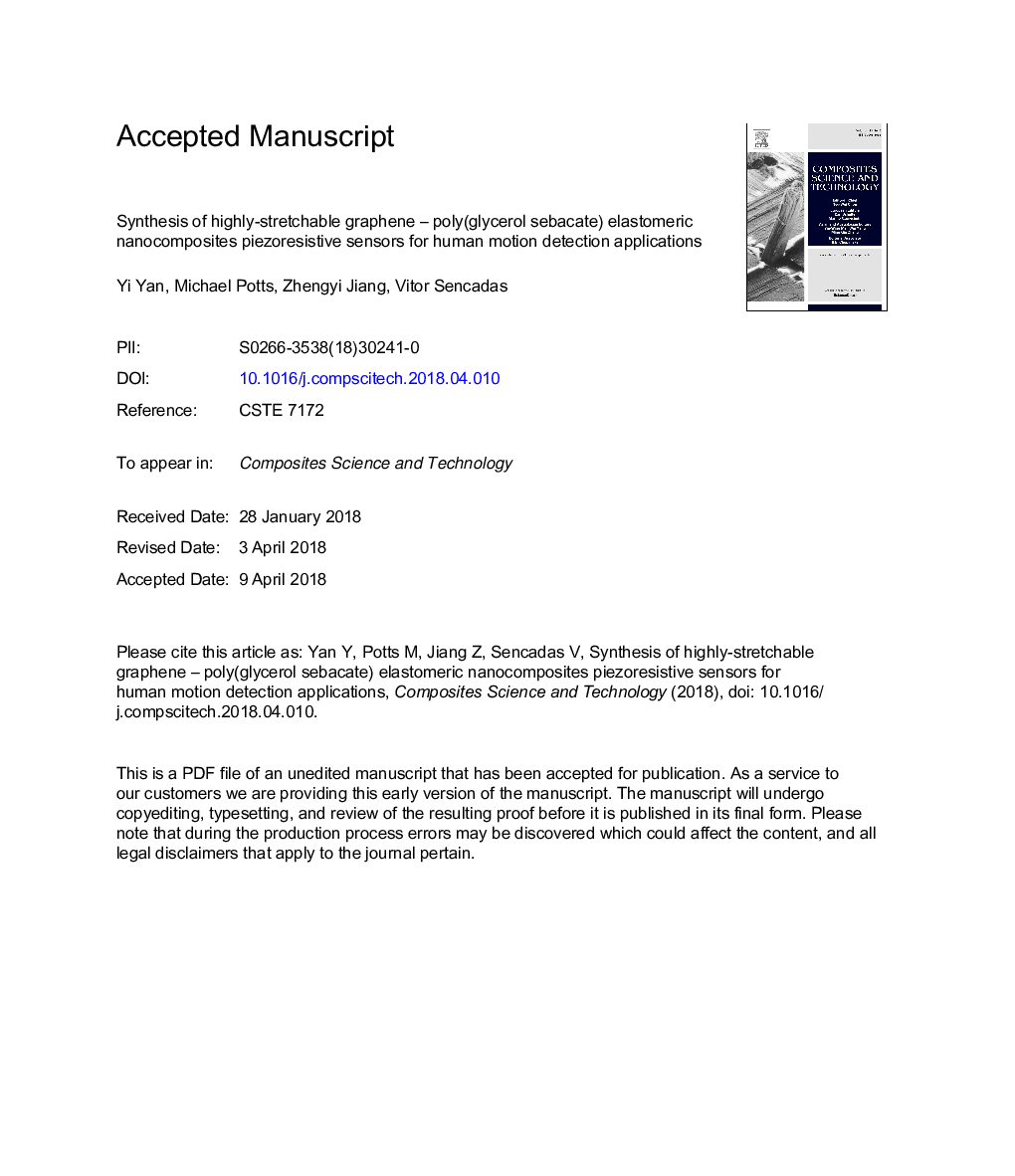| Article ID | Journal | Published Year | Pages | File Type |
|---|---|---|---|---|
| 7214357 | Composites Science and Technology | 2018 | 23 Pages |
Abstract
Strain sensors capable of monitoring human motion are highly desirable not only to monitor in real time complex body parts movement but also to assess the patients' health condition. In this work, highly stretchable elastomeric nanocomposite strain sensors were developed by synthesis of poly(glycerol sebacate) (PGS) prepolymer, followed by incorporation of the graphene flakes (fG) during the curing procedure of the PGS elastomeric matrix. The PGS had Young's modulus (E) of 69â¯Â±â¯6â¯kPa, while the sample with 10â¯wt% fG had a E of 501â¯Â±â¯28â¯kPa, which is as soft as human skin. Moreover, the incorporation of the fG filler led to an increase of the matrix cross-linking density, from 8.0â¯Â±â¯0.6â¯mol/m3, up to 35.5â¯Â±â¯1.4â¯mol/m3, recorded for the pure matrix and for the sample with 10â¯wt% fG, respectively. The electromechanical behavior of the nanocomposite samples showed that the resistance changes linearly with the applied strain, until a maximum strain of 50%, and is independent of the stroke speed or applied strain. The nanocomposite sensor sensibility was calculated through the gauge Factor (GF), and a value of â¼2 was obtained for all the processed strain gauges. Furthermore, the developed sensors showed a remarkable capability to monitor the bending movement of the finger. Finally, the performance revealed by the synthetized piezoresistive sensors will contribute to the next generation of highly stretchable smart materials for sensing and control human motion with minimum discomfort.
Related Topics
Physical Sciences and Engineering
Engineering
Engineering (General)
Authors
Yi Yan, Michael Potts, Zhengyi Jiang, Vitor Sencadas,
